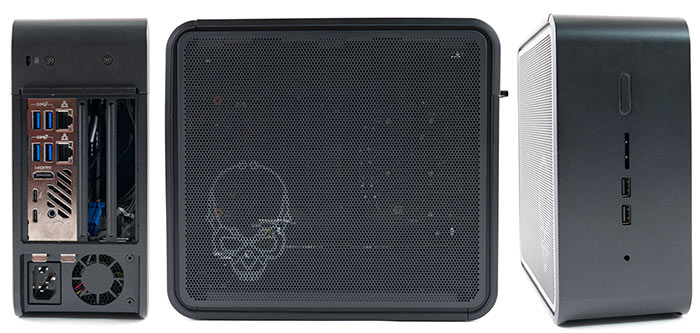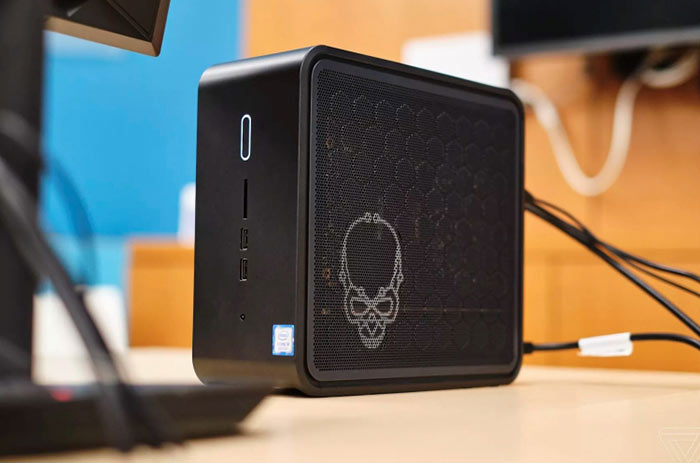Intel's modular Ghost Canyon NUC was one of the company's more interesting products on display at the CES 2020 in Las Vegas. This product range provides quite a step up from existing NUCs in size, but also in upgradability and future-proofing. Thanks to the larger chassis (5 litre, rather than the standard low profile NUC at 0.7l, or storage expandable version at about 1.3l) there is more room for powerful components. They aren't very affordable systems though, and we don't really know the upgrade costs users will face when inevitably they may want to swap out the 'Compute Element' to give these systems a new lease of life.

You can check out the official Ghost Canyon pages in the Intel Ark for specs. You will see that there are three versions of this NUC available at this time. Furthermore, you will see that the three Compute Element cards, which each respective NUC is based upon, are available separately.
The top-end Intel NUC 9 Extreme Kit - NUC9i9QNX is based upon a Core i9 processor, namely the Intel Core i9-9980HK processor (16M Cache, up to 5.00GHz). The corresponding Compute Element is the same, and would serve as an upgrade to the currently sold i5 and i7 versions. I'm not sure why anyone would buy the lowest end Compute Element though as it isn't an upgrade for anyone, just a replacement. Likewise the modular upgradability of the high end model only comes into play a year or two down the line when/if Intel decides to market newer generation boards that slot into this chassis.
An immediately useful upgradable part of owning a NUC 9 Extreme Kit is the choice of discrete graphics card. I've spotted several reviews of the top end NUC9i9QNX today and they all seem to come equipped with an Asus Dual GeForce RTX 2070 Mini 8GB GDDR6. This looks like a rather snug fit in the images so is a good indication of the max compatibility here. Asus says this card was designed with the Intel NUC 9 Extreme Kit, Intel NUC 9 Pro Kit, and other small chassis in mind.

Of the reviews I looked over by AnandTech and PCWorld, the former was more in depth and provided a lot more benchmarks, particularly with an eye on PC gaming. In conclusion though, PCWorld was pithier, balancing the modular design, customisability, good selection of ports, and fairly quiet compact performance against the very big concern of pricing. Indicative of system pricing, the top end Core i9 Ghost Canyon costs $1,700 but you can choose the i7 version for $1,250, or i5 version for $1,050. However, in addition to these ticket prices you will have to pay quite a bit extra to purchase your choice of GPU, memory, storage, and OS - if you don't have spares lying around.













